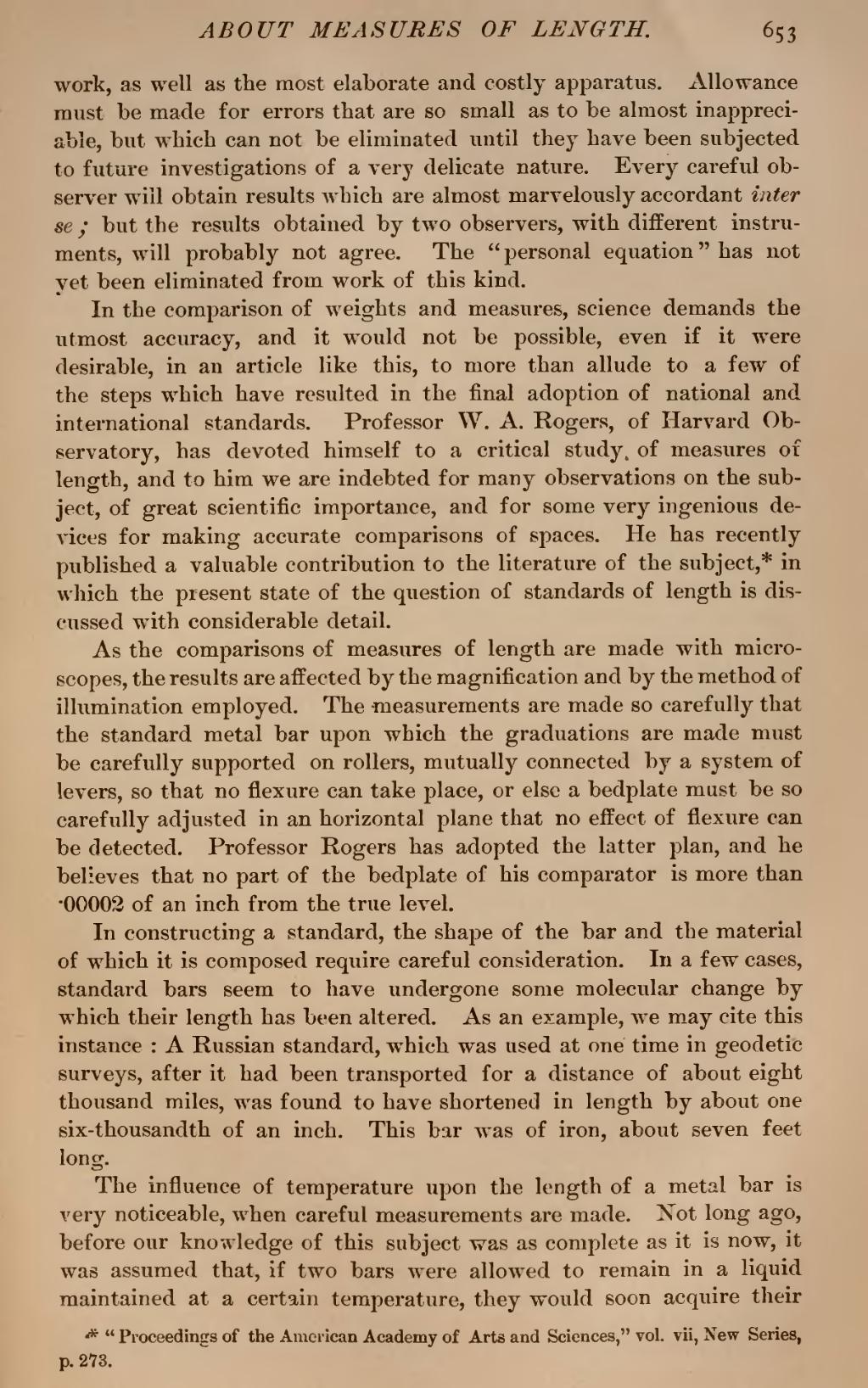work, as well as the most elaborate and costly apparatus. Allowance must be made for errors that are so small as to be almost inappreciable, but which can not be eliminated until they have been subjected to future investigations of a very delicate nature. Every careful observer will obtain results which are almost marvelously accordant inter se; but the results obtained by two observers, with different instruments, will probably not agree. The "personal equation" has not yet been eliminated from work of this kind.
In the comparison of weights and measures, science demands the utmost accuracy, and it would not be possible, even if it were desirable, in an article like this, to more than allude to a few of the steps which have resulted in the final adoption of national and international standards. Professor W. A. Rogers, of Harvard Observatory, has devoted himself to a critical study, of measures of length, and to him we are indebted for many observations on the subject, of great scientific importance, and for some very ingenious devices for making accurate comparisons of spaces. He has recently published a valuable contribution to the literature of the subject,[1] in which the present state of the question of standards of length is discussed with considerable detail.
As the comparisons of measures of length are made with microscopes, the results are affected by the magnification and by the method of illumination employed. The measurements are made so carefully that the standard metal bar upon which the graduations are made must be carefully supported on rollers, mutually connected by a system of levers, so that no flexure can take place, or else a bedplate must be so carefully adjusted in an horizontal plane that no effect of flexure can be detected. Professor Rogers has adopted the latter plan, and he believes that no part of the bedplate of his comparator is more than ·00002 of an inch from the true level.
In constructing a standard, the shape of the bar and the material of which it is composed require careful consideration. In a few cases, standard bars seem to have undergone some molecular change by which their length has been altered. As an example, we may cite this instance: A Russian standard, which was used at one time in geodetic surveys, after it had been transported for a distance of about eight thousand miles, was found to have shortened in length by about one six-thousandth of an inch. This bar was of iron, about seven feet long.
The influence of temperature upon the length of a metal bar is very noticeable, when careful measurements are made. Not long ago, before our knowledge of this subject was as complete as it is now, it was assumed that, if two bars were allowed to remain in a liquid maintained at a certain temperature, they would soon acquire their
- ↑ "Proceedings of the American Academy of Arts and Sciences," vol. vii, New Series, p. 273.

